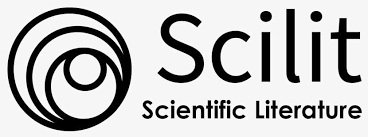Pemeringkatan Kinerja Dosen pada Perguruan Tinggi Swasta Menggunakan Algoritma Simple Additive Weighting
DOI:
https://doi.org/10.14421/jiska.2024.9.1.59-69Keywords:
Algorithms, Simple Additive Weighting, SAW, Tri Dharma of Higher Education, Student FeedbackAbstract
The Tri Dharma of Higher Education is an obligation for lecturers while carrying out their duties as lecturers at higher education institutions, the implementation of which is regulated in Law Number 20 of 2003 concerning the National Education System. The Tri Dharma of Higher Education is a lecturer's obligation, including Education and Teaching, Research and Development, and Community Service. Lecturers need Support and motivation to implement quality Tri Dharma, especially at "X" Private Universities. Providing rewards or awards can motivate lecturers to give their best performance to Tri Dharma. Student feedback is also needed as evaluation material for lecturers to measure their teaching abilities. Rewarding lecturers can be done by ranking lecturer performance, especially at private universities. The SAW (Simple Additive Weighting) algorithm ranks lecturer performance through the criteria of education and teaching, research, community service, and student feedback. An assessment of several subcriteria presents each criterion. The normalized scoring matrix is the ranking preference. From the results of data processing on lecturer performance and feedback from students, with a sample of 25 lecturers, a ranking score was obtained on a scale of 0 to 1, where a score of 1 is the highest ranking. The lecturer performance ranking process involves lecturers, students, and the Study Program Management Unit. A lecturer performance rating information system is needed to facilitate all actors' involvement in the lecturer performance rating process and provide valid and timely rating results to stakeholders.
References
Apriani, N. D., Krisnawati, N., & Fitrisari, Y. (2021). Implementasi Sistem Pendukung Keputusan Dengan Metode SAW Dalam Pemilihan Guru Terbaik. Journal Automation Computer Information System, 1(1), 37–45. https://doi.org/10.47134/jacis.v1i1.5
Ariani, S. S. (2019). Persepsi Mahasiswa dalam Pengimplementasian Tri Daharma Perguruan Tinggi. At-Tadbir : Jurnal Manajemen Pendidikan Islam, 3(1), 59–77. https://doi.org/10.3454/AT-TADBIR.V3I1.3414
Azhari, D. S., & Alaren, A. (2017). Peran Dosen dalam Mengembangkan Karakter Mahasiswa. Jurnal Pelangi, 9(2), 88–97. https://doi.org/10.22202/jp.2017.v9i2.1856
Gunawan, V. S., & Yunus, Y. (2021). Sistem Penunjang Keputusan dalam Optimalisasi Pemberian Insentif terhadap Pemasok Menggunakan Metode TOPSIS. Jurnal Informatika Ekonomi Bisnis, 101–108. https://doi.org/10.37034/infeb.v3i3.86
Jufri, H. Al. (2022). Perhitungan Manual Dengan Menggunakan Metoda SAW (Simple Additive Weighting). Jurnal Ilmiah Sistem Informasi, 2(1), 59–68. https://doi.org/10.46306/SM.V2I1.21
Ratama, N. (2020). Sistem Penunjang Keputusan dan Sistem Pakar dengan Pemahaman Studi Kasus. Uwais Inspirasi Indonesia. http://uwaismall.com
Serelia, E. B., & Adin Saf, M. R. (2020). Sistem Pendukung Keputusan Penentuan Peminatan Siswa Dengan Menggunakan Metode SAW (Simple Additive Weighting) Pada SMA Negeri Dharma Pendidikan. Techno.Com, 19(3), 227–236. https://doi.org/10.33633/tc.v19i3.3498
Setiadi, A., Yunita, Y., & Ningsih, A. R. (2018). Penerapan Metode Simple Additive Weighting (SAW) Untuk Pemilihan Siswa Terbaik. Jurnal Sisfokom (Sistem Informasi Dan Komputer), 7(2), 104–109. https://doi.org/10.32736/sisfokom.v7i2.572
Simatupang, J. (2018). Sistem Pendukung Keputusan Penentuan Karyawan Terbaik Menggunakan Metode SAW Studi Kasus AMIK Mahaputra Riau. Jurnal Intra Tech, 2(1), 73–82. https://doi.org/10.37030/jit.v2i1.27
Sukaryati, L. N., Voutama, A., Karawang, U. S., & Ronggo, J. H. (2022). Penerapan Metode Simple Additive Weighting Pada Sistem Pendukung Keputusan Untuk Memilih Karyawan Terbaik. Jurnal Ilmiah Matrik, 24(3), 260–267. https://doi.org/10.33557/JURNALMATRIK.V24I3.2029
Hery Sunandar, & Denni M Rajagukguk. (2021). Sistem Pendukung Keputusan Penentuan Instruktur Bahasa Inggris Dengan Metode Simple Additive Weighting (SAW). JUKI : Jurnal Komputer Dan Informatika, 1(2), 59–65. https://doi.org/10.53842/juki.v1i2.18
Syam, S., & Rabidin, M. (2019). Metode Simple Additive Weighting dalam Sistem Pendukung Keputusan Pemilihan Karyawan Berprestasi (Studi Kasus : PT. Indomarco Prismatama cabang Tangerang 1). UNISTEK, 6(1), 14–18. https://doi.org/10.33592/unistek.v6i1.168
Wijaya, L. F. (2021). Sistem Reward dan Punishment Sebagai Pemicu dalam Meningkatkan Kinerja Karyawan. Journal MISSY (Management and Business Strategy), 2(2), 25–28. https://doi.org/10.24929/missy.v2i2.1681
Yulianti, E., & Z, R. (2018). Sistem Pendukung Keputusan Seleksi Penerima Bedah Rumah Menggunakan Metode Simple Additive Weighting (SAW) (Studi Kasus : Dinas Sosial Dan Tenaga Kerja Kota Padang). JURNAL TEKNOIF, 6(2), 64–73. https://doi.org/10.21063/JTIF.2018.V6.2.64-73
Yusuf, R., & Triyono, G. (2022). Sistem Penunjang Keputusan Menggunakan Metode SAW di PT Gracias Mitra Selaras. Prosiding Seminar Nasional Mahasiswa Fakultas Teknologi Informasi (SENAFTI), 1(1), 2003–2010. https://senafti.budiluhur.ac.id/index.php/senafti/article/view/369
Downloads
Published
How to Cite
Issue
Section
License
Copyright (c) 2024 Elly Mufida, Nandang Iriadi, Doni Andriansyah

This work is licensed under a Creative Commons Attribution-NonCommercial 4.0 International License.
Authors who publish with this journal agree to the following terms as stated in http://creativecommons.org/licenses/by-nc/4.0
a. Authors retain copyright and grant the journal right of first publication with the work simultaneously licensed under a Creative Commons Attribution License that allows others to share the work with an acknowledgement of the work's authorship and initial publication in this journal.
b. Authors are able to enter into separate, additional contractual arrangements for the non-exclusive distribution of the journal's published version of the work (e.g., post it to an institutional repository or publish it in a book), with an acknowledgement of its initial publication in this journal.
c. Authors are permitted and encouraged to post their work online (e.g., in institutional repositories or on their website) prior to and during the submission process, as it can lead to productive exchanges, as well as earlier and greater citation of published work.










